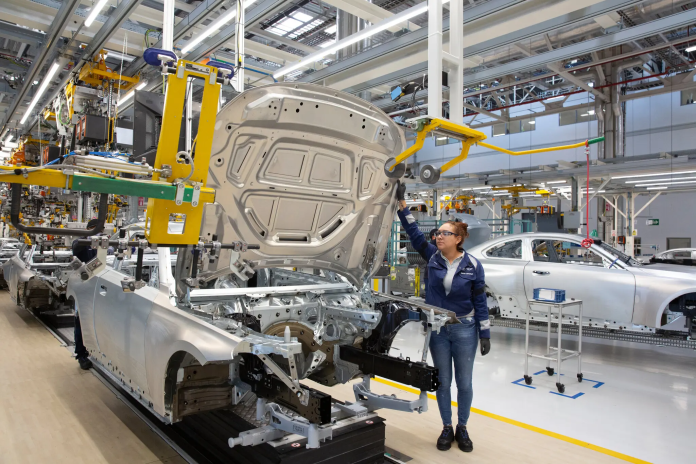Germany is on track to surpass 3 million unemployed workers for the first time in a decade, as companies face bankruptcies or abandon hopes of an economic recovery, according to Politico.
The crisis, which began with plant closures in energy-intensive industries like chemicals in 2022, has now spread to the automotive sector, a cornerstone of the German economy. Major players such as Volkswagen have announced thousands of job cuts, with ripple effects felt across smaller industries reliant on manufacturing giants.
The Ifo Institute’s employment barometer indicates that “almost all branches of industry in Germany want to reduce their headcount.” At the start of 2024, the seasonally adjusted unemployment rate rose to 6.2%, the highest level in over four years, nearing pandemic-era peaks.
Klaus Wohlrabe, Ifo’s head of surveys, predicts unemployment will hit the psychologically significant 3-million mark by mid-2025.
Hidden unemployment and structural challenges
While the headline unemployment figure remains below the 5-million peak of the early 2000s, it does not capture the full extent of the labor market’s weakness. Factors such as increased use of early retirement schemes, state subsidies for shortened working hours (Kurzarbeit), and a decline in new job vacancies suggest the situation is worse than official statistics indicate.
The Kurzarbeit programme, which allows companies to reduce working hours instead of laying off employees, has seen a significant uptick in usage. In November 2024, 293,000 employees received benefits under the scheme, a 30,000 increase from the previous month and a two-thirds rise from the previous year.
While Kurzarbeit is designed to address temporary economic downturns, Germany’s current challenges—such as the loss of cheap energy supplies and aggressive competition from China—are structural and long-term, Wohlrabe warns.
The extension [of Kurzarbeit] may keep workers in unviable jobs rather than freeing them up for viable ones. Many firms are weighing the cost of retaining staff against the risk of letting staff go and not finding qualified replacements once things pick up again. A key question is how long companies can afford to do this.
Early retirement masks crisis
Another factor obscuring the true state of unemployment is the Altersteilzeit scheme, which allows older workers to reduce their hours as they approach retirement. Volkswagen, for example, plans to cut 35,000 jobs in Germany by 2030, with a significant portion achieved through early retirement offers.
Nicolas Stihl, owner of the eponymous saw manufacturer, noted that the labor market crisis has been ongoing but remains hidden.
The labor market crisis arrived a long time ago, but just isn’t visible. The jobless rate in Germany would be a lot higher than 6 percent if parts of the big demographic cohorts weren’t being sent into early retirement through Altersteilzeit and the like.
Data on early retirement usage is lagged, with 284,000 workers participating at the end of 2023—less than half the 2009 peak but rising steadily since 2015, even during periods of economic growth.
Broader issue
The outlook for Germany’s labour market remains bleak. Corporate bankruptcies rose by 25% in 2024, and the IAB labor market think tank warns that industry is shedding 10,000 jobs per month. Nicolas Ziebarth, head of labor market research at the Leibniz Center for European Economic Research, expressed pessimism about the next decade, predicting rising unemployment as structural challenges persist.
While a new government following the February 23 elections may address some uncertainties, its impact will take time to materialize. In the meantime, Germany’s labor market—once the envy of Europe—faces a prolonged period of adjustment and difficulty.
Meanwhile, European activists and politicians have also begun to draw attention to the industrial crisis gripping Europe. Former Italian Prime Minister Giuseppe Conte called the issue “unprecedented,” emphasising the lack of prospects for workers from Stellantis, a multinational automotive manufacturing company.
An unprecedented industrial crisis, for which the government has no solutions, no answers. This morning in front of the gates of the Stellantis plants in Melfi, I met workers, many of whom are on furlough and without prospects, who only ask to be able to work and instead are forced to go to the factory a couple of times a month, if they’re lucky.
Conte also stressed that the Italian government should focus on “serious investments in industrial revival” rather than European militarisation.
[Prime Minister Giorgia] Meloni fought in Europe to spend more money on weapons; we say that a serious government fights for serious investments in industrial revival and to combat high energy bills and the rising cost of living.
French MP François-Xavier Bellamy, meanwhile, noted on X that Europe, including France, needed to provide industry with “accessible energy.”
Europe and France are at a crossroads. To get out of this decline and loss of status, we must unleash the power of our businesses, eliminate the regulations that stifle production, and ensure stable and accessible energy. This is at the heart of the European campaign we have conducted.
